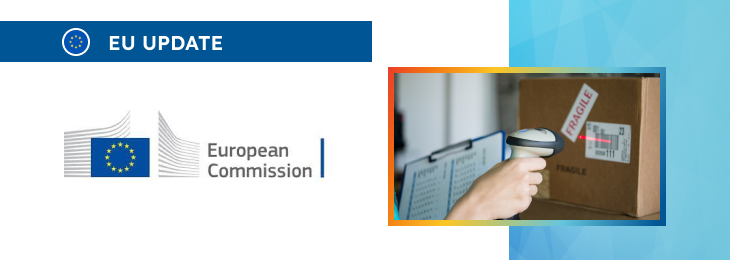The new article describes in detail the approach to be applied with respect to labeling for medical devices undergoing clinical evaluation.

Table of content
The Medical Device Coordination Group (MDCG), an advisory body focused on further improvement of the medical device regulatory framework, has published a guidance document dedicated to the content of the Investigator’s Brochure for clinical investigations of medical devices.
The document provides an overview of the regulatory requirements set forth under the existing legal framework, as well as additional clarifications and recommendations to be taken into consideration by medical device manufacturers, study sponsors, and other parties involved in operations with medical devices intended to be marketed and used in the EU.
In particular, the document outlines the scope of information responsible parties should include when providing general information and also clarifies the details expected when it comes to matters related to labeling.
General Description of the Device
First of all, the document elaborates on the general description of the medical device in question the Investigator’s Brochure (IB) should contain in order to satisfy the relevant regulatory requirements, and also to ensure the parties involved are duly informed about the product and specific aspects associated thereto.
- Design Principle: According to the document, the IB serves as a comprehensive guide to the critical design aspects of the device, clarifying the technical and scientific principles applied in its construction. The description provided should be clear and understandable to a diverse audience, avoiding assumptions of specialized expertise. It should outline the device’s operation and mode of action, supported by relevant scientific literature where available.
- Key Functional Elements: A detailed overview of the device’s key functional elements is to be provided, encompassing its parts, formulation, composition, and functionality. This section should incorporate labeled visual aids such as diagrams and photographs to enhance comprehension. The MDCG also mentions that while animations or recordings may supplement understanding, they are complementary to the written description.
- Materials Utilized: In addition to the above, a transparent compilation of materials used in the device is to be presented, preferably in tabular form. Special attention should be given to materials in contact with the human body, necessitating a separate section on biocompatibility and biological safety. Additionally, any medicinal substances or biologically active components should be meticulously documented.
- Technical Specifications: The document should contain technical specifications including features, dimensions, and performance attributes, covering both the device and its variants/configurations. This information mirrors what users typically encounter in brochures or catalogs, facilitating informed decision-making during clinical investigation.

Manufacturing Processes
Another section of the IB should describe in detail various matters related to manufacturing processes and key considerations associated thereto. According to the guidance, this includes, inter alia, the aspects related to Quality Assurance.
First of all, it is important to ensure the IB contains a summary of the manufacturing process that highlights measures taken to ensure device quality and robustness. Variability inherent to biological materials or critical components should be addressed through design and control. This includes comprehensive quality controls, verifications, validations, and final testing to uphold regulatory standards.
Device Evolution and Previous Iterations
An overview of previous and similar iterations of the device is recommended, focusing on clinical and confirmatory pre-clinical testing phases. This overview, ideally presented in tabular format, should describe the version evolution, accompanied by brief explanations and rationales for changes.
Comparable Devices
The MDCG also encourages the parties responsible parties to provide an overview of equivalent or similar devices available in Union or international markets to contextualize clinical data evaluation and anticipated benefits. The relevant summary should highlight key features and intended purposes, emphasizing the novelty of the investigational device compared to existing alternatives.
Labels and Instructions for Use
The present MDCG guidance pays special attention to the information accompanying medical devices in order to ensure the key safety- and performance-related considerations are duly communicated to all the parties involved in operations with the device.
According to the guidance this includes, inter alia, the following aspects:
- Installation and Maintenance Guidelines: Manufacturer’s instructions for device installation, maintenance, and hygienic standards should be included, along with guidance on label information. Instructions for use should be detailed to prevent user errors, employing graphic illustrations where beneficial. Additionally, information on device preparation, re-use, and storage requirements should also be provided.
- Training Requirements: The document should outline the training needs and plans to ensure proper device utilization, enhancing user competence and patient safety.
- Implant Card: In the case of clinical investigations involving implantable devices, the provision of a study implant card to patients is recommended for safety purposes. Concerning the detailed requirements for implant card content, the guidance refers to the relevant regulatory documents to be consulted with for ensuring compliance with applicable standards.
Conclusion
In summary, the Investigator’s Brochure provides a comprehensive overview of the investigational device, encompassing design principles, manufacturing processes, device evolution, comparable devices, and instructions for use. Due to the comprehensive information contained therein, it serves as an important resource for stakeholders involved in clinical investigations, fostering understanding, safety, and efficacy throughout the investigative process.
How Can RegDesk Help?
RegDesk is a holistic Regulatory Information Management System that provides medical device and pharma companies with regulatory intelligence for over 120 markets worldwide. It can help you prepare and publish global applications, manage standards, run change assessments, and obtain real-time alerts on regulatory changes through a centralized platform. Our clients also have access to our network of over 4000 compliance experts worldwide to obtain verification on critical questions. Global expansion has never been this simple.

